New ownership letter template
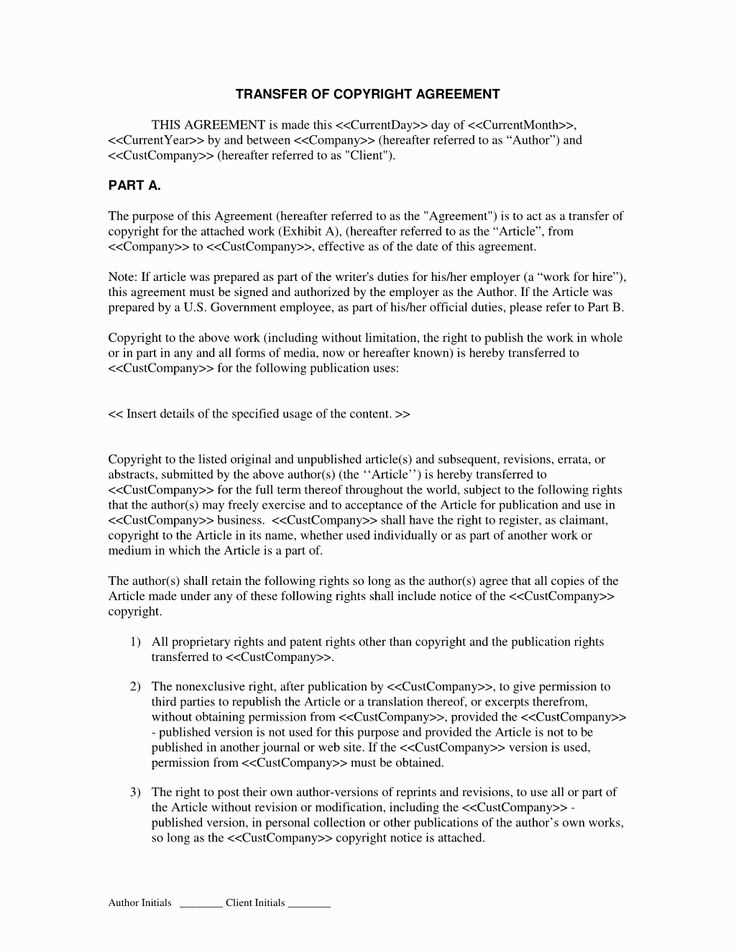
Creating a new ownership letter requires clarity and precision. Ensure that the document includes the necessary details to establish a legal and clear transfer of ownership.
Begin with a statement that confirms the change of ownership. Clearly identify the item or property involved and provide both the current and new owner’s full names and addresses. This will avoid any ambiguity in ownership claims.
Next, specify the terms of the transfer. If applicable, outline any conditions attached to the transfer or the agreed-upon date for the change. Include a section for both parties to sign, confirming their acceptance of the ownership transfer.
Finally, keep the language straightforward and unambiguous. Avoid using unnecessary legal jargon. The goal is to provide all relevant information in an accessible and understandable manner for both parties involved.
Here’s the Revised Text:
Ensure your letter clearly states the change in ownership. Use a direct approach that leaves no room for ambiguity. Begin with a concise declaration that you are notifying the recipient about the transition of ownership. For example:
Example Opening Statement:
“This letter serves as formal notification of the change in ownership for [item/asset/property], effective [date].”
Following this, include key details such as the previous and new owner’s names, and any relevant terms of the transition. If necessary, specify the reason for the change in ownership, but keep the tone straightforward. Highlight any action required from the recipient’s side to acknowledge or facilitate the process. Close the letter by confirming the completion of all necessary formalities.
- New Ownership Letter Template
A new ownership letter should clearly outline the transfer of ownership and include important details such as the names of the parties involved, the item or property being transferred, and the date of the transfer. Keep the language formal and direct. Below is a simple template to use as a guide:
New Ownership Letter Template
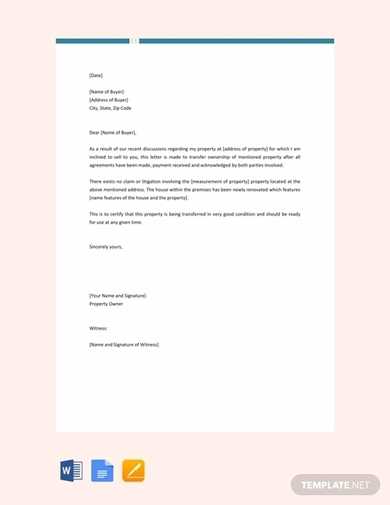
Subject: Transfer of Ownership
Dear [Recipient’s Name],
This letter serves as confirmation of the transfer of ownership for [Item/Property Name] from [Seller’s Name] to [Buyer’s Name]. The details of the transfer are as follows:
- Item/Property Description: [Detailed description of the item or property]
- Previous Owner: [Seller’s Name]
- New Owner: [Buyer’s Name]
- Transfer Date: [Date]
By signing below, both parties acknowledge the successful transfer of ownership and agree to the terms outlined. Should there be any questions, please do not hesitate to reach out.
Sincerely,
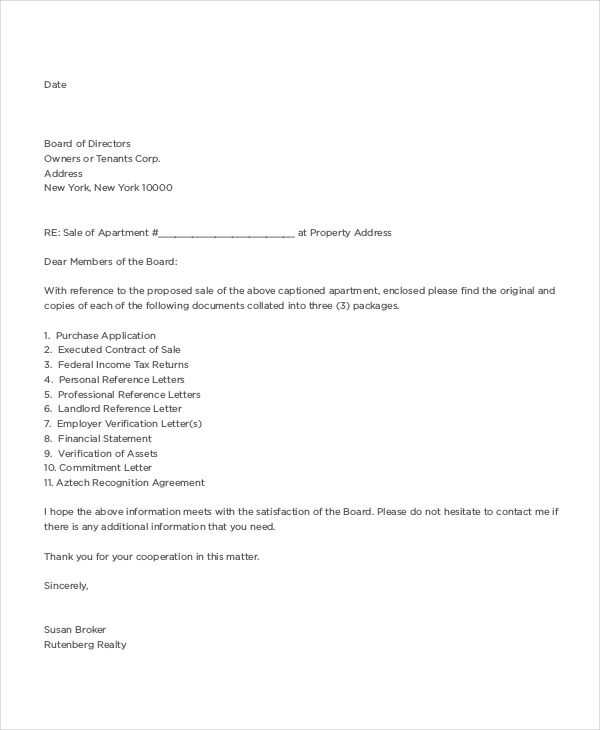
[Your Name]
[Your Contact Information]
Note: Modify the template to reflect the specific details of the transfer as needed.
A new ownership letter is a formal document that confirms the transfer of ownership from one individual or entity to another. This letter serves as proof of change in ownership, outlining relevant details such as the item or property being transferred, the terms of the transfer, and the new owner’s responsibilities.
Key Points to Include
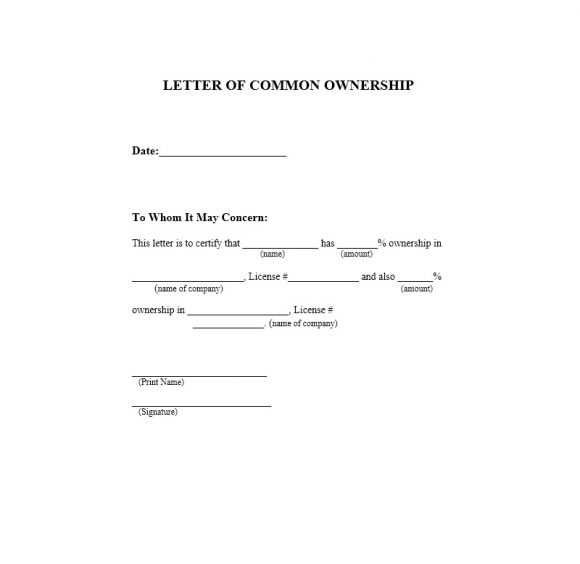
- Clear identification of the item or property being transferred.
- Details of the previous and new owner, including full names and contact information.
- Exact date of transfer and any specific conditions tied to the transfer.
- Legal terms or clauses that may apply, such as warranty or insurance coverage.
Why It’s Needed
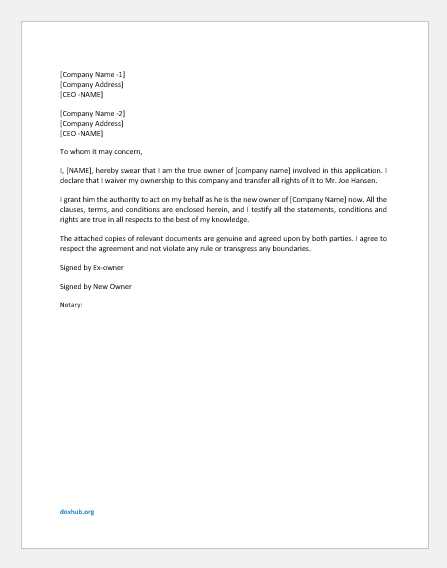
This letter is essential for legal and administrative purposes. It ensures both parties are on the same page regarding the transfer and provides a written record for future reference, such as in cases of disputes or verification requests.
Include the full names and contact information of both the current and new owners. Clearly state the date of the transfer to establish a clear point of change. Add any legal references or terms related to the transaction that both parties agree on. List any items or properties involved in the transfer, specifying their condition, if relevant. If there are any financial terms, include the agreed amount, payment method, and any deadlines. Ensure both parties sign and date the document to finalize the process. If necessary, include a section for any specific instructions or warranties that apply to the transfer.
Address the letter to the appropriate legal entity or individual involved in the ownership transfer. Use the correct title, whether it’s a corporation, LLC, or an individual. For example, if the entity is a corporation, begin the letter with “To the Board of Directors” or the name of the company followed by “Attention:” and the specific department or representative handling the transaction.
Include the full name and contact details of the recipient, ensuring all spelling and addresses are accurate to avoid legal issues. If addressing an individual, use their full name and correct honorifics (e.g., Mr., Ms., Dr.). If the letter is directed to a legal department, specify the department clearly. For example, “To the Legal Department at [Company Name].”
Ensure that the recipient’s official title and position are mentioned if relevant, which further solidifies the document’s legitimacy. For instance, use “Dear Mr. John Doe, Legal Counsel at [Company Name]” or “To the Legal Team, [Company Name].” Double-check the recipient’s details against official records to avoid mistakes that could invalidate the letter.
Use a clean and structured layout. Start with a clear heading and divide the letter into sections, such as introduction, body, and conclusion. This helps the reader quickly navigate through the content.
Opt for a professional font, such as Arial or Times New Roman, in a readable size (11-12pt). Avoid using decorative or overly stylized fonts that may distract from the message.
Keep paragraphs short and focused. This makes your letter easier to read and avoids overwhelming the reader with large blocks of text.
Use bullet points or numbered lists for important details or steps. This format draws attention to key points and breaks up the text visually.
Ensure consistent alignment throughout. Text should be left-aligned, and avoid excessive indentation or spacing that could confuse the reader.
Use bold or italics sparingly to highlight key information, but don’t overdo it. Emphasize only the most important details to guide the reader’s focus.
Leave enough white space around the text. Proper margins and spacing between paragraphs can help the content feel less cramped and more accessible.
Proofread carefully to avoid typos and grammatical errors. Clean, error-free text reinforces professionalism and ensures your message is clear.
Ensure you include accurate dates. Missing or incorrect dates can create confusion about the timing of the ownership transfer.
- Vague Language: Be clear about the transaction. Avoid phrases like “around” or “approximately.” Specify exact dates and terms.
- Not Including Contact Information: Make sure to include the full names and contact details of both parties. This helps in case any follow-up is needed.
- Overcomplicating the Text: Keep your wording simple and direct. Avoid unnecessary legal jargon that could make the letter harder to understand.
- Missing Signatures: Don’t forget to sign the letter. Both parties should sign to make the document official and binding.
- Unclear Property Details: If the letter involves assets, clearly identify them. For example, if it’s property, include the address and any key identifiers.
Always use a reliable delivery method to ensure the recipient receives the letter. Sending via registered mail, courier, or email with read receipts provides proof of delivery. Double-check the recipient’s contact details, including their full name and address, before sending the document. Acknowledge the receipt by requesting the recipient to sign or respond with confirmation.
If sending electronically, ask the recipient to reply to your email or use an acknowledgment receipt option. For physical delivery, include a delivery confirmation or return receipt request to track whether the letter was successfully received.
| Delivery Method | Confirmation Type |
|---|---|
| Registered Mail | Return Receipt |
| Courier | Delivery Confirmation |
| Read Receipt | |
| Fax | Transmission Confirmation |
Record all delivery tracking information and any communication from the recipient for reference. This will help address any disputes or issues regarding receipt at a later stage.
To create a new ownership letter, begin with a clear statement identifying the change in ownership. Specify the involved parties, including the former and new owner. Provide relevant details, such as the date of the transfer and a brief description of the item or property involved.
Example: “I, [Former Owner’s Name], hereby transfer ownership of [Property/Item] to [New Owner’s Name], effective from [Date].”
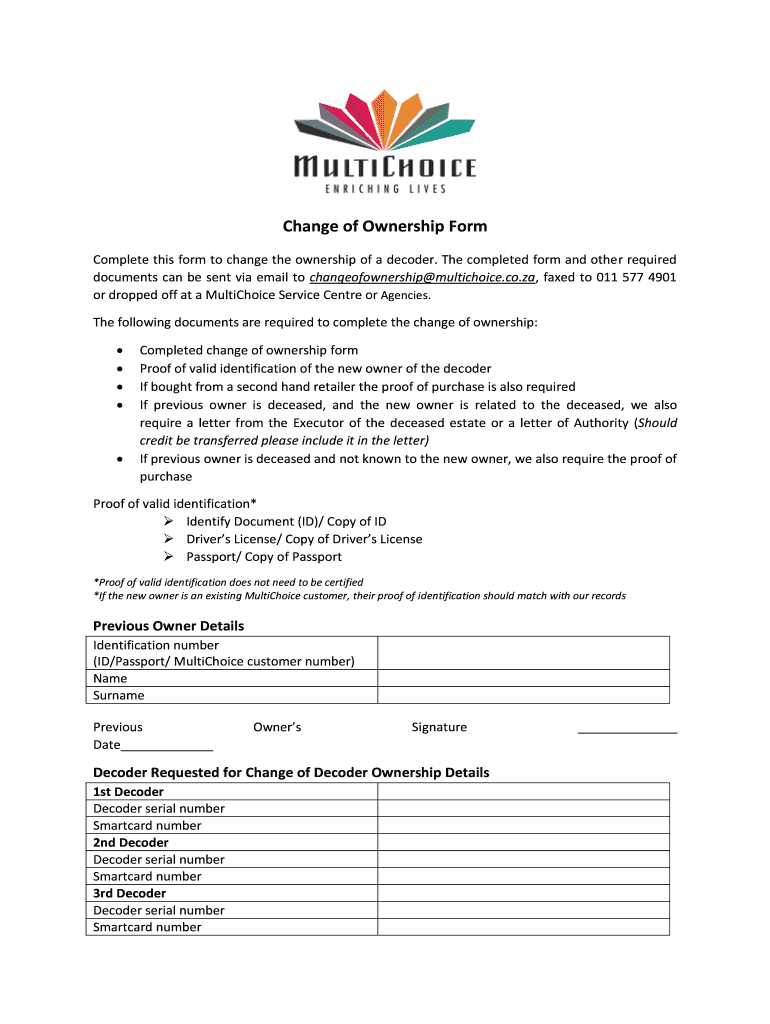
Include any conditions, if necessary, such as warranties or responsibilities that come with the ownership. Ensure the document is signed by both parties to confirm the transfer.
Make sure to include contact details for both parties in case of future communications regarding the ownership transfer.